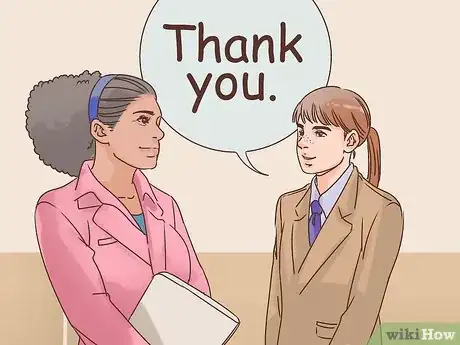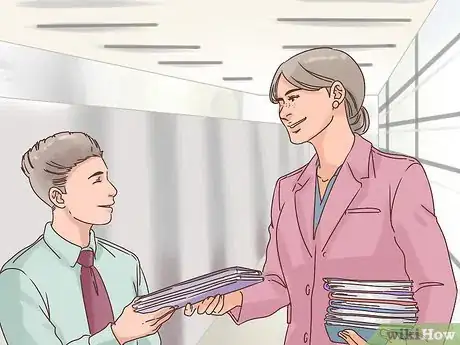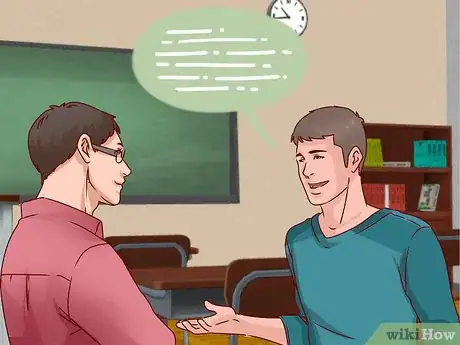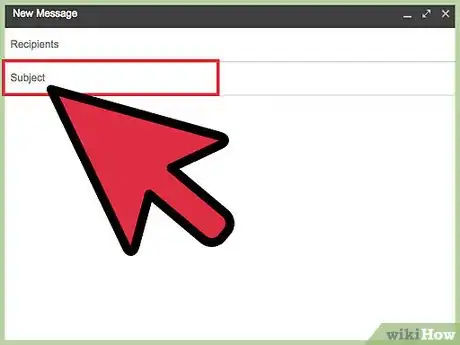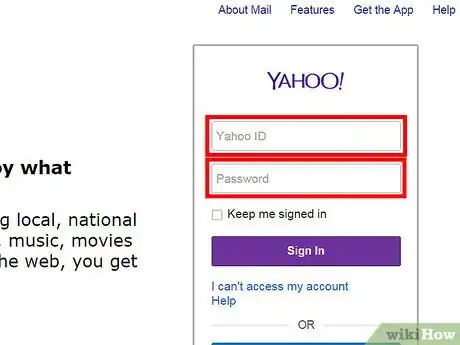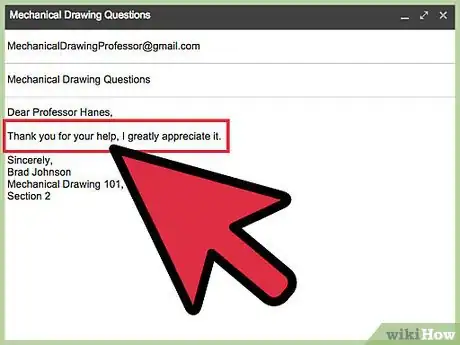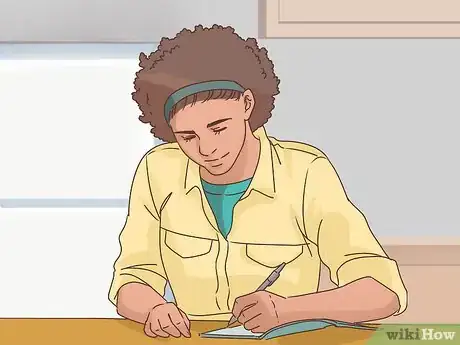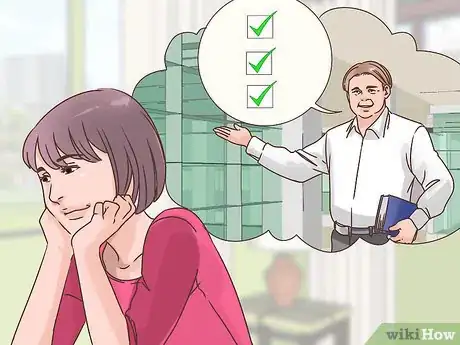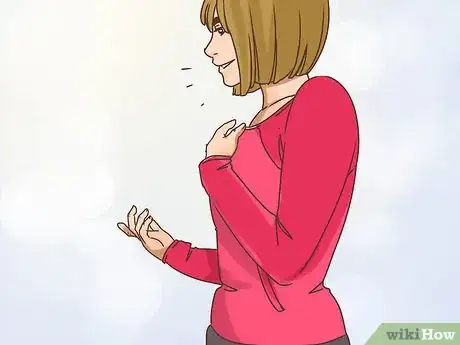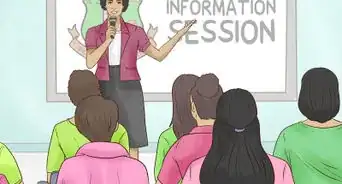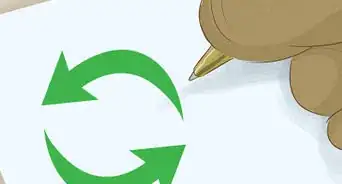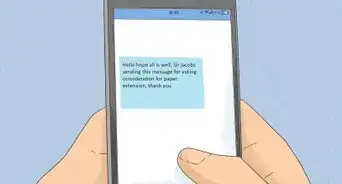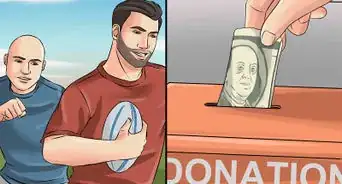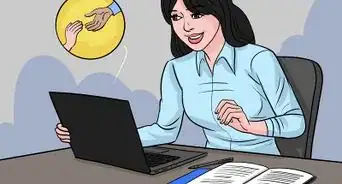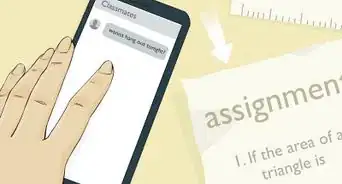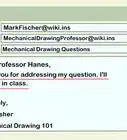This article was co-authored by Christopher Taylor, PhD. Christopher Taylor is an Adjunct Assistant Professor of English at Austin Community College in Texas. He received his PhD in English Literature and Medieval Studies from the University of Texas at Austin in 2014.
This article has been viewed 79,707 times.
There are some professors that go above and beyond what’s expected of them and really have an impact on you. Thanking them is a great way to show them you care and make them feel appreciated (professors like to feel appreciated too!). But what do you say, and how do you go about saying it? This article will walk you through the dos and don’ts of thanking your professor—how you should thank them, what kind of things you should say, when you should send your thanks—so you can express your gratitude in the best way possible.
Steps
Expressing Your Thanks In-Person
-
1Approach them after class or during office hours. Talk to your professor after class or meet them at office hours. Meeting in person can allow you some time to talk to the professor outside of just saying thank you if you wish. It can also help the professor pair your name and face together.
- If you want to create or maintain a professional relationship with your professor, you may want to thank them in person so that they get to know you better.
-
2Open with your thanks. Get right to the point and say “thank you” up front. This will make the intentions of the visit clear and direct. That way, your professor won’t be left wondering why you made contact with them.
- For example, say, “I wanted to express my gratitude for your class” or “Thank you for writing a letter of recommendation for me.”
Advertisement -
3Be specific. If there was something that really stood out to you about this professor or class, let them know. For example, mention a lecture you enjoyed, a field trip that taught you something, or an exchange that stuck with you. Mentioning something specific will show that you put thought into your thank you.
- For example, say, “I’ll never forget the first lecture you gave. I knew I would learn a lot from this class because you went so in-depth on the very first day.”
-
4Be polite. Now is not the time to be overly casual with your professor or to try to become friends with them. Be polite and professional. Also, don’t use your thank you as a way make a demand or be rude to your professor about something else.[1]
Providing Written Thanks
-
1Be direct in the subject line of your email . Include a subject so that the professor sees the email and knows what it’s about. If you leave the subject line empty, they might miss the email or think you want something or have a question. Make it clear from the start that the email is to express your gratitude.[2]
- Write a simple, “Thanks” or, “Thank you” as the subject line.
-
2Use your student email address. Avoid using your personal email address when sending something to your professor. Using your student email address is more formal and helps the professor identify you easily. It’s also more professional and appropriate, which can save you some embarrassment if you have a silly or unique email address.[3]
- Double check to make sure you’re sending your email from the right account.
-
3Address them formally by name. Don’t start off by writing, “Hey” or getting right to the email. Take a moment to address your professor. It’s typically most appropriate to address them as they ask to be addressed in class, for example, “Professor Hasan” or “Doctor Abel.”
- Don’t be overly informal with them by calling them by their first name or not addressing them at all. Stick to how they prefer to be called by students.
-
4Write a handwritten note or card. A handwritten card may be seen as more thoughtful than an email. While not as fast as sending an email, it shows that you put time and effort into your thank you. It also provides a touch of personalization.[4]
- Give your thank you note to your professor at the end of term or slip it under their office door.
-
5Send feedback online through your university’s website. Some colleges and universities have a way to write a letter of thanks to a professor online.[5] If your school offers this service, take advantage of it. Often, you can leave a note of thanks anonymously.
Giving Your Reasons for Thanks
-
1Thank a professor for good instruction. If you were impressed with the instruction you received and believe the class was outstanding, let your professor know. Maybe they had a way to take a dull subject and make it exciting or kept students engaged during class. Whatever the reasons, let them know you appreciate the effort they put into making class great.
- Even if you felt very challenged, let the professor know you learned a lot and challenged yourself.
-
2Show your appreciation for a letter of recommendation. If you’re applying to graduate schools or for a job, you likely need letters of recommendation. If a professor agreed to write you a letter of recommendation, send a thank you once they’ve completed their letter. It’s work to write a letter of recommendation and send it out. Let them know you appreciate their efforts.
-
3Say thank you for their help. If you professor helped you in any way, it’s nice to send some recognition. Maybe they talked to you about career choices or directed you to helpful resources. If they helped you in any way, let them know you appreciate their help.
- For example, they might have helped you look at graduate schools or given you pointers on other classes to take.
-
4Thank them sooner rather than later. Thank your professor as soon as you can. The sooner you say thank you, especially after a professor has done a favor for you, the better. Don’t wait weeks or even days. Prioritize your thank you and get it down as soon as possible. Within 24-hours of completing a favor is generally appropriate.
- If they are your current professor for the term, consider saying thank you after grades are released.
References
- ↑ http://udel.edu/~jsoares/How%20to%20Use%20Proper%20Email%20Etiquette%20When%20Writing%20to%20a%20Professor.pdf
- ↑ http://udel.edu/~jsoares/How%20to%20Use%20Proper%20Email%20Etiquette%20When%20Writing%20to%20a%20Professor.pdf
- ↑ http://udel.edu/~jsoares/How%20to%20Use%20Proper%20Email%20Etiquette%20When%20Writing%20to%20a%20Professor.pdf
- ↑ https://www.forbes.com/sites/learnvest/2014/06/09/interview-etiquette-is-the-handwritten-thank-you-note-outdated/#771aa16714c9
- ↑ http://undergrad.fiu.edu/cat/thank-a-professor.html
About This Article
If your professor taught a great class, did you a favor, or wrote you a letter of recommendation, you’ll want to thank them. One way to thank your professor is to meet them in person. Try to catch them after class or during office hours. Open your conversation by thanking them so they know why you’re there. Be as specific as possible with your thanks, like telling them “I’ll never forget the first lecture you gave. I knew I would learn a lot from this class because it was so in-depth.” Another way to thank a professor is to write them an email. Write “Thanks” or “Thank you” in the subject line so your email isn’t overlooked. In your email, be formal by addressing your professor by their proper title. Then, briefly thank them before formally ending with your full name and the name of the class you took with them. To learn how to write a handwritten note or card of thanks to your professor, keep reading!

